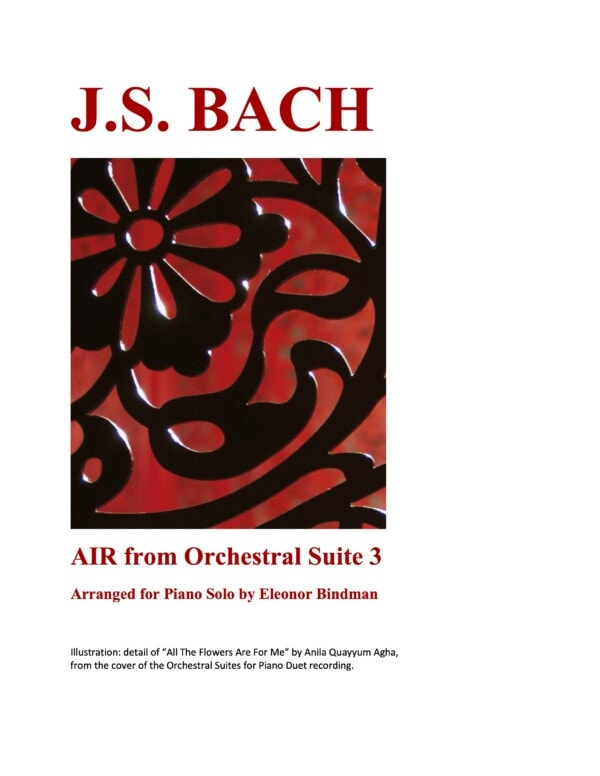J.S. Bach: Air from Orchestral Suite 3
$5.00
Downloadable Score
Making a solo piano version of the Air from Orchestral Suite No. 3 didn’t occur to me at first. The extreme popularity of this movement, usually referred to as “Air On G String,” implies many existing arrangements, as befits one of “Bach’s Greatest Hits.” Even while working on the piano-4-hands arrangement of the complete Orchestral Suites, I had mixed feelings about the somewhat hackneyed high-pitched theme and couldn’t imagine performing it convincingly, especially with repeats. A solution had to be found and, after creating several piano duet versions, I settled on one where the melody is first introduced an octave lower and then played again in the original register. The adjustment made the higher – octave iteration sound fresh and much more welcome to my ears.
Curious about the reason for the added “G String” in the title, I read about a German violinist named August Wilhelmj who also transposed the melody an octave lower in 1871, so that it could be played on just the lowest string on the violin, the G string. Wikipedia doesn’t explain whether Wilhelmj wanted to use one string as a matter of principle or, perhaps, preferred the sound of the lower register. Either way, I was happy to discover I was not alone. After rehearsing, recording and listening to the resulting piano-4-hands version, I grew to like it and decided to proceed with a solo piano version after all, so here it is.
I include 2 versions of the transcription: with and without fingerings. As in most of my arrangements, the inner voices are shared between the hands depending on which one can reach the notes. I try to indicate my preferred rendition with brackets and fingerings but you can find your own solutions – see mm. 23-24 for instance. Do use the pedal to sustain notes in upper and lower voices when the hands are needed to fill in the middle. For comfortable execution of this type of legato counterpoint, your wrists and elbows need to be relaxed. Then the hands will easily assume comfortable positions – usually with the wrist raised – for accommodating two lines with one hand. For example, beat 1 of the left hand in m. 6 becomes easy if you use the pedal and keep the wrist relaxed and quite high. The tempo can be stretched a bit and is fairly slow to begin with, so the score isn’t as intimidating in practice as it may look upon first glance. For inspiration and reference, it’s always useful to listen to recordings: there are plenty of orchestral ones out there and my piano duet version of is also available, released on Grand Piano records in November 2022.
